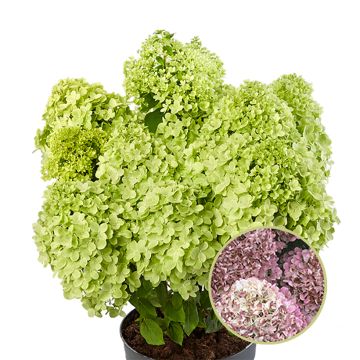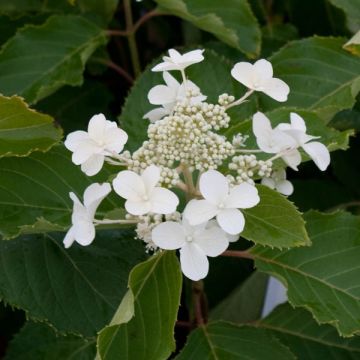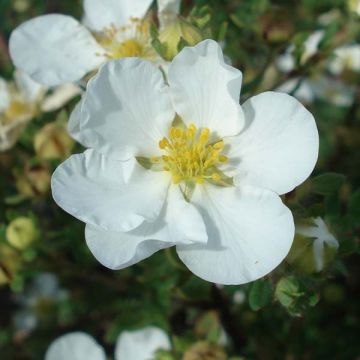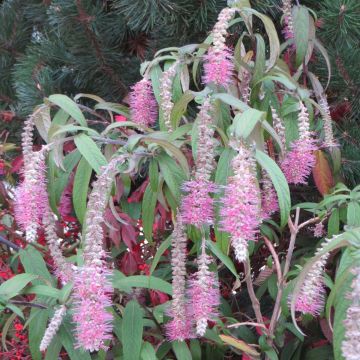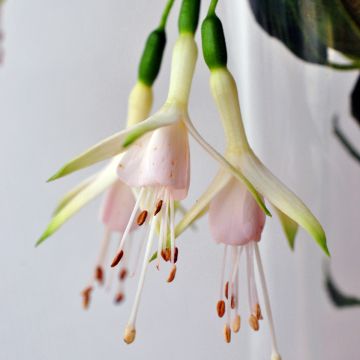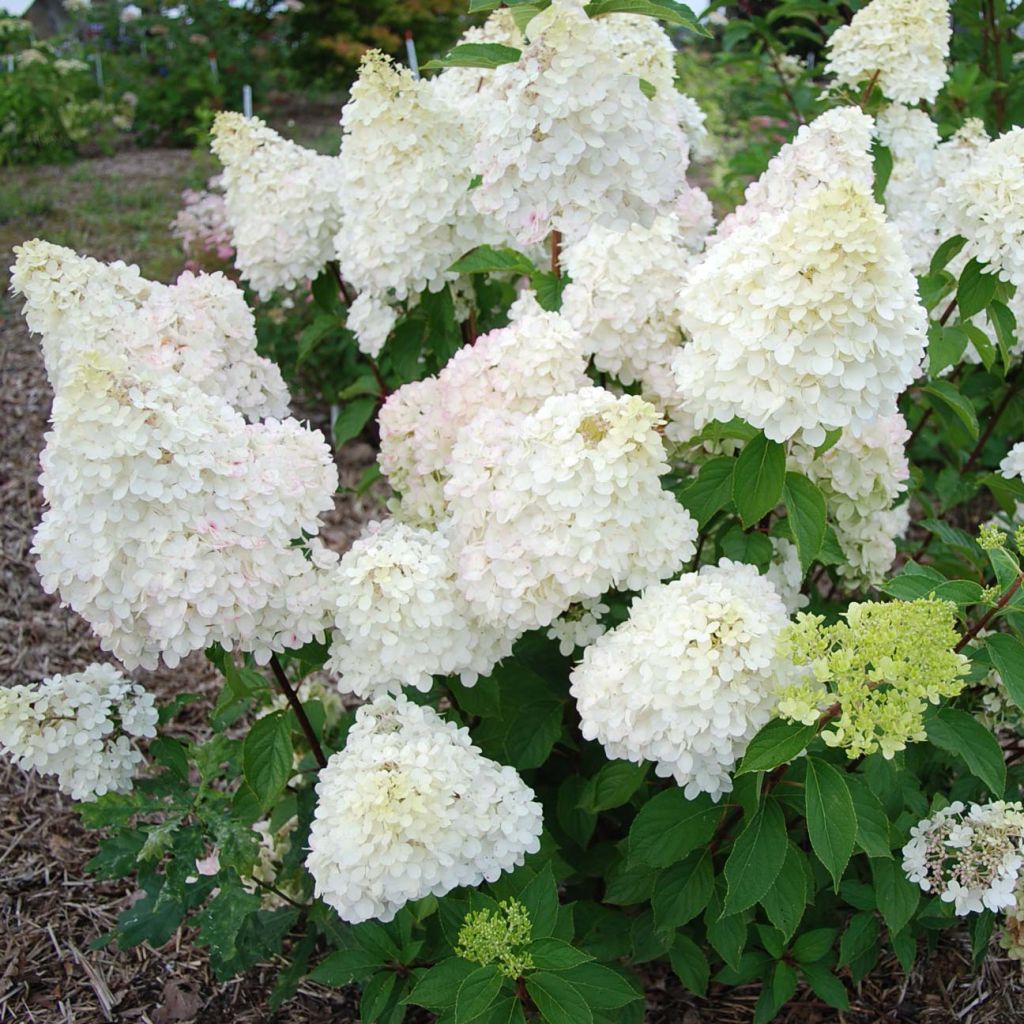

Hydrangea paniculata Diamantino
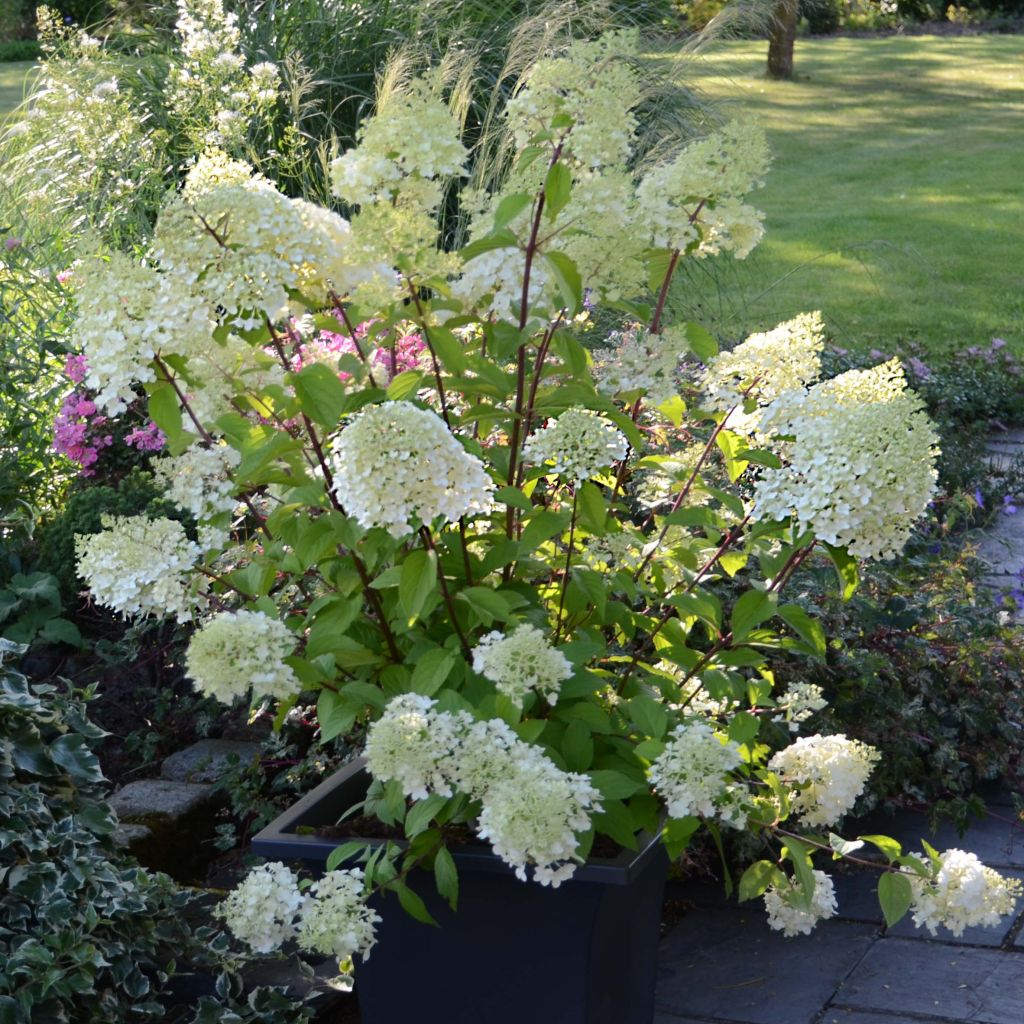

Hydrangea paniculata Diamantino
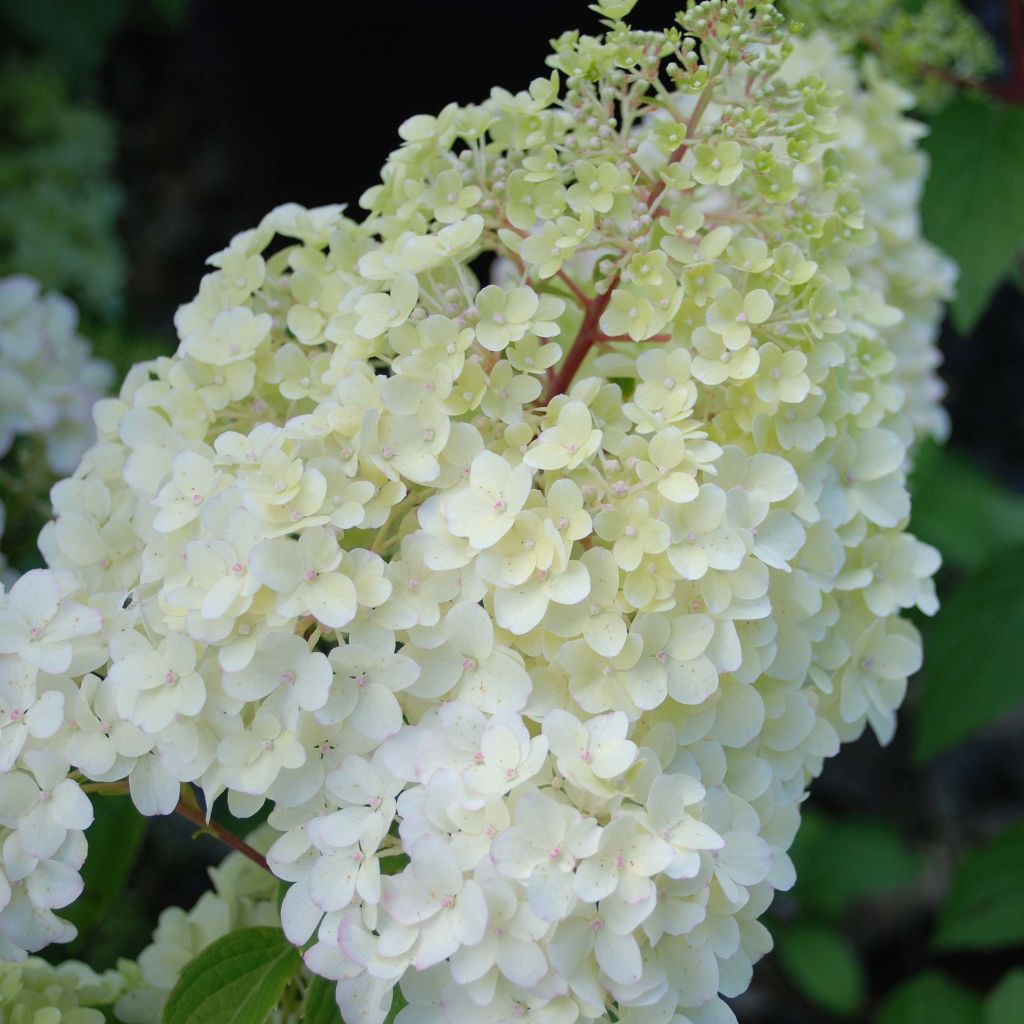

Hydrangea paniculata Diamantino
Hydrangea paniculata Diamantino
Hydrangea paniculata Diamantino (Ren101)
Paniculate Hydrangea, Panicled Hydrangea, Panicle Hydrangea
I am a loyal customer of Promesse de Fleurs, I really enjoy buying from them, but I have noticed a decline in the quality of the plants; but this time it's the limit! Hydrangeas that I ordered, for the price I paid, I received weak plants with almost no leaves - in the month of July! With leaves all speckled with young and violet colours. What did they do to put them in such a state? Is there mistreatment for plants? If it exists, it's definitely at Promesse de Fleurs. Very disappointed! I really do not recommend their hydrangeas, it's better to buy them from stores.
Natalia, 06/08/2023
This item cannot be shipped to the selected country
Delivery charge from €5.90
Delivery charge from €5.90
More information
Schedule delivery date,
and select date in basket
This plant carries a 24 months recovery warranty
More information
We guarantee the quality of our plants for a full growing cycle, and will replace at our expense any plant that fails to recover under normal climatic and planting conditions.
From €5.90 for pickup delivery and €6.90 for home delivery
Express home delivery from €8.90.
From €5.90 for pickup delivery and €6.90 for home delivery
Express home delivery from €8.90.

Does this plant fit my garden?
Set up your Plantfit profile →
Description
Hydrangea paniculata 'Diamantino' is a variety of paniculate hydrangea that amazes with its excellent durability and captivates with its early, abundant and spectacular flowering. Quite stocky and equipped with very strong stems that bear, without weakening, large panicles of colour-changing flowers that remain decorative late in the season, this shrub is well-adapted to growing in large pots and is very useful for arranging small spaces. Its plump inflorescences bloom from the end of spring, gradually changing from pale yellow-green to pure white then to pink, or even to crimson at the end of summer. In the garden, one can easily picture this veritable ball of flowers installed under a window or against a small staircase, for example.
Hydrangea paniculata, also called Paniculate Hydrangea, is a particularly hardy species of hydrangea belonging to the Hydrangeaceae family native to the leafy woods of China and Japan. It is easy to grow in any good garden soil that remains fresh.
The 'Diamantino' variety, introduced to the market in 2013, was developed in France by Mr Renault. The shrub shows a particularly dense and compact habit, supported by its main upright, thick branches, which remain perfectly straight under the weight of the flowers. At maturity, this variety will rarely exceed 1.2 m (3 ft 11 in) in all directions, with fairly rapid growth. From mid-June, many truly spectacular panicles of flowers unfold on the year's branches; these measure 20 cm (7.9 in) long and are conical but more rounded than those of other H. paniculata. They contain numerous fertile, single florets, evolving from a greenish-cream hue to a more or less intense pink in autumn, passing through shades of white. From spring, the branches bear finely dentate, ovate leaves of a rather light green colour, measuring 5 to 15 cm (2 to 5.9 in) long and 5 to 7 cm (2 to 2.8 in) wide. They turn yellow in autumn, before disappearing in winter. Paniculate hydrangeas are less sensitive to late frosts because they mostly bloom on the year's shoots.
Hydrangea paniculata distinguishes itself from its cousin, Hydrangea macrophylla, by its good tolerance to the sun, sea spray and relative drought. Installed in any good garden soil without too much limestone, in the space of a few seasons, Hydrangea paniculata 'Diamantino' forms a bush with a very neat appearance that is covered with flowers for three months. Plant it alone, in a low hedge or in a massif, or even in light undergrowth, mixed with other hydrangeas and perpetual roses to play with contrasts and shapes. You can also combine it with grasses like Miscanthus, Panicum virgatum Squaw and Stipa. Its small stature allows it to be incorporated into a small garden and to be grown without difficulty in a large pot on the terrace where it will live for many years with the addition of fertiliser and regular watering.
Report an error about the product description
Hydrangea paniculata Diamantino in pictures






Plant habit
Flowering
Foliage
Botanical data
Hydrangea
paniculata
Diamantino (Ren101)
Hydrangeaceae
Paniculate Hydrangea, Panicled Hydrangea, Panicle Hydrangea
Cultivar or hybrid
Other Hydrangea Paniculata
Planting and care
Hydrangea paniculata Diamantino is not demanding about the nature of the soil, provided it is not too heavy or too chalky and is kept rather fresh. It requires a sunny but non-burning exposure, or partial shade. When planting, install it in a deeply worked soil. A good base fertiliser (horn or dried blood) will promote the recovery of your plant and nourish it without risk of burning. If your soil tends to be dry, mix our STOCKOSORB® water retainer with the soil when filling in the planting hole and provide a surface watering basin.
At the end of summer, we advise you not to cut the dry panicles which will protect the terminal shoots of the branches in winter; you should cut all the dry flowers at the end of February or on the first summer days. The plant's spring vegetation appears rather late.
Hydrangea paniculata Diamantino must be pruned at the end of winter to produce more inflorescences and keep a dense habit. Apart from deliberately limiting the expansion of the bush if it has become too large, you should take care not to remove the two-year-old branches, as doing so will compromise the development of the plant.
Hydrangea Paniculata is more resistant to drought and establishes itself easily even in non-acidic soil. It blooms generously from June until the first frosts. When planted in the sun, its inflorescences change colour in autumn.
Planting period
Intended location
Care
-
, onOrder confirmed
Reply from on Promesse de fleurs
Summer-flowering shrubs
Haven't found what you were looking for?
Hardiness is the lowest winter temperature a plant can endure without suffering serious damage or even dying. However, hardiness is affected by location (a sheltered area, such as a patio), protection (winter cover) and soil type (hardiness is improved by well-drained soil).

Photo Sharing Terms & Conditions
In order to encourage gardeners to interact and share their experiences, Promesse de fleurs offers various media enabling content to be uploaded onto its Site - in particular via the ‘Photo sharing’ module.
The User agrees to refrain from:
- Posting any content that is illegal, prejudicial, insulting, racist, inciteful to hatred, revisionist, contrary to public decency, that infringes on privacy or on the privacy rights of third parties, in particular the publicity rights of persons and goods, intellectual property rights, or the right to privacy.
- Submitting content on behalf of a third party;
- Impersonate the identity of a third party and/or publish any personal information about a third party;
In general, the User undertakes to refrain from any unethical behaviour.
All Content (in particular text, comments, files, images, photos, videos, creative works, etc.), which may be subject to property or intellectual property rights, image or other private rights, shall remain the property of the User, subject to the limited rights granted by the terms of the licence granted by Promesse de fleurs as stated below. Users are at liberty to publish or not to publish such Content on the Site, notably via the ‘Photo Sharing’ facility, and accept that this Content shall be made public and freely accessible, notably on the Internet.
Users further acknowledge, undertake to have ,and guarantee that they hold all necessary rights and permissions to publish such material on the Site, in particular with regard to the legislation in force pertaining to any privacy, property, intellectual property, image, or contractual rights, or rights of any other nature. By publishing such Content on the Site, Users acknowledge accepting full liability as publishers of the Content within the meaning of the law, and grant Promesse de fleurs, free of charge, an inclusive, worldwide licence for the said Content for the entire duration of its publication, including all reproduction, representation, up/downloading, displaying, performing, transmission, and storage rights.
Users also grant permission for their name to be linked to the Content and accept that this link may not always be made available.
By engaging in posting material, Users consent to their Content becoming automatically accessible on the Internet, in particular on other sites and/or blogs and/or web pages of the Promesse de fleurs site, including in particular social pages and the Promesse de fleurs catalogue.
Users may secure the removal of entrusted content free of charge by issuing a simple request via our contact form.
The flowering period indicated on our website applies to countries and regions located in USDA zone 8 (France, the United Kingdom, Ireland, the Netherlands, etc.)
It will vary according to where you live:
- In zones 9 to 10 (Italy, Spain, Greece, etc.), flowering will occur about 2 to 4 weeks earlier.
- In zones 6 to 7 (Germany, Poland, Slovenia, and lower mountainous regions), flowering will be delayed by 2 to 3 weeks.
- In zone 5 (Central Europe, Scandinavia), blooming will be delayed by 3 to 5 weeks.
In temperate climates, pruning of spring-flowering shrubs (forsythia, spireas, etc.) should be done just after flowering.
Pruning of summer-flowering shrubs (Indian Lilac, Perovskia, etc.) can be done in winter or spring.
In cold regions as well as with frost-sensitive plants, avoid pruning too early when severe frosts may still occur.
The planting period indicated on our website applies to countries and regions located in USDA zone 8 (France, United Kingdom, Ireland, Netherlands).
It will vary according to where you live:
- In Mediterranean zones (Marseille, Madrid, Milan, etc.), autumn and winter are the best planting periods.
- In continental zones (Strasbourg, Munich, Vienna, etc.), delay planting by 2 to 3 weeks in spring and bring it forward by 2 to 4 weeks in autumn.
- In mountainous regions (the Alps, Pyrenees, Carpathians, etc.), it is best to plant in late spring (May-June) or late summer (August-September).
The harvesting period indicated on our website applies to countries and regions in USDA zone 8 (France, England, Ireland, the Netherlands).
In colder areas (Scandinavia, Poland, Austria...) fruit and vegetable harvests are likely to be delayed by 3-4 weeks.
In warmer areas (Italy, Spain, Greece, etc.), harvesting will probably take place earlier, depending on weather conditions.
The sowing periods indicated on our website apply to countries and regions within USDA Zone 8 (France, UK, Ireland, Netherlands).
In colder areas (Scandinavia, Poland, Austria...), delay any outdoor sowing by 3-4 weeks, or sow under glass.
In warmer climes (Italy, Spain, Greece, etc.), bring outdoor sowing forward by a few weeks.



































